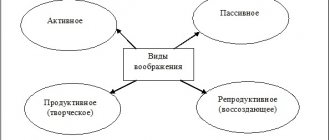The magical world of stones
What is the reason for the popularity of drawings on stones? The fact is that stone, unlike paper, concrete, plastic and other materials, lives for a very long time. It lives – the stone is born, formed and polished. It absorbs the energy of the sun, the power of the earth. Therefore, the creator, when choosing a stone for painting, is only an intermediary, a conductor, allowing the stone to come to life and convey its energy to the person who needs it.
A unique type of creativity - collecting, painting and decoupage of ordinary stones - was loved by the children and parents of our Cloudberry group, since it does not require any special expenses or skills, and the main material, stone, can be found literally under their feet.
One of the children brought smooth stones of different shapes and natural colors to the kindergarten, all the children began to look at them with enthusiasm, the stones interested them, captivated them, the children themselves included the stones in the plot of their game. During a walk in the kindergarten territory, the children began to collect the small pebbles they liked. The head of our kindergarten “Brusnichka”, Svetlana Sergeevna Dubovskaya, gave us the idea to start painting pebbles in different bright colors and to show creativity and imagination in making crafts. The children really liked the idea and enthusiastically began decorating the stone. By engaging in creative activities with unformed material, the child becomes involved in observing natural phenomena, becomes more familiar with the natural world, and improves his skills in caring for the environment. Due to climatic conditions, children of the North are moving further and further away from nature, forgetting its beauty and value. In order to reduce this gap, our kindergarten organizes excursions with children to the tundra in summer and autumn. I saw how children’s communication with nature turned into something exciting, surprising and delightful for children; communication with living and non-living nature made them think and sincerely rejoice. No book, no story can replace what children saw in the tundra with their own eyes and touched with their own hands. Their inner world was filled with new colors and impressions. It is at a young age that nature influences the child’s feelings with its brightness and diversity. Therefore, it is necessary to include practical creative activities for them to interact with nature. Another teacher Ushinsky wrote: “If you want to teach a child to think logically, introduce him to nature.”
Drawings on stones are an interesting technique for children. After all, such a painted pebble, unlike a paper picture, is not only a “work of art” of the young artist, but also a toy. Children are happy to paint the stones. The main thing is to take a closer look. After all, in every stone there is someone or something hiding: a cat, a car, a tree, a person... Each pebble appears to the child as a new friend. This means that they must have names, titles or purposes, like all surrounding objects. A painted pebble acquires its own shape, color, its own unique image; you can touch it, twist it, play with it. An ordinary stone “comes to life” and becomes a shaggy bear cub, a cheerful hedgehog, a fairy-tale craft, and the child involuntarily plunges into the world of fantasy and fairy tales, where his stones overcome difficulties, are sad, rejoice, and achieve success. Look carefully, and the pebbles will reveal their secret to you. And a brush and paints will help tell everyone else about it. In the course of joint creative work, Valeria turned a pebble into a colorful butterfly with paints, and especially for the butterfly she herself came up with a dance-game, where children turn into flowers, and the butterfly chooses a friend. The children enjoyed dancing with the stone, a butterfly, to the music. Some of the children wanted to draw their own butterfly, others a dragonfly. Thus, we have reached a new level beyond joint activities into independent activities.
Research work “Stones and minerals of the Perm region”
- January 12, 2017
Fast distance online competitions
Competition “Project activities of junior schoolchildren”
Introduction
I chose this topic because I have been collecting stones for 3 years; I am very interested in discovering the properties of stones and minerals. Traveling into the world of stone is a very exciting experience. When I look at the stones, it’s as if I’m traveling into the distant past of our planet and the area where I live.
There are countless different stones on Earth: beautiful and not so beautiful, of different colors and shapes. Beauty! I admire the stones and think: after all, each of them contains some kind of secret and a hundred mysteries. And not all of them have probably been revealed and solved. And how much these stones have seen in their lifetime!
So I wanted to know what secrets they conceal. How many are there, how do they differ from each other, are there edible stones, the history of their appearance on Earth, and what benefits do stones bring to people?
The purpose of the study is to study the diversity of the world of stones and minerals in the Perm region.
Research objectives:
1. Identify the features of the appearance, properties and diversity of stones and minerals. 2. Systematize information about stones and minerals obtained from libraries, museums and other sources. 3. Collect a collection of minerals.
The object of research is stones and minerals.
The subject is the properties of stones and minerals.
Hypotheses: Assumption 1: Let us assume that the shape of the crystal directly depends on the internal structure. Assumption 2: If crystals exist in nature, then there is a mention of them in the literature.
In my work, the following research methods were used: studying literature and Internet information, observation, watching documentaries.
Chapter 1. What is a stone?
Where does the history of the stone begin? Academician A.E. Fersman said that the history of stone begins with the most distant eras of human existence. Didn’t stone exist on Earth before the advent of man? Existed. And geology confirms this. The stone is as old as our Earth. It is an integral part of the Earth and especially its upper part - the earth's crust. Stone is inseparable from the Earth and participates in its geological history[1].
Stone is a natural material and rock used in many industries, including construction. The most common types of minerals and rocks in the form of building and finishing stones:
- Granite
is a natural stone of igneous origin, which consists of quartz, plagioclase, potassium feldspar and mica. Color range: gray, red, burgundy-red, red-pink, pink, brown-red, gray-green, black-green with large light splashes. One of the densest, hardest and most durable rocks. Used in construction as a facing material. - Limestone
is a natural stone of sedimentary origin, white in color, consisting of calcium carbonate (calcite). - Marble
is the most popular and elite stone among natural stones. - Quartzite-sandstone
is a natural stone, a monolith of sedimentary origin, the rock-forming mineral of which is quartz. Color range: yellow, beige, gray natural shades with a pronounced pattern. - Sandstone
is a natural stone of sedimentary origin, consisting mainly of quartz particles. Color range: yellow, yellow-brown, gray, gray-green natural shades. - Quartzite
is a natural stone that belongs to metamorphic rocks consisting mainly of quartz and mica. Color range: gray-green and yellow-brown natural shades, with silver inclusions of mica. - Slate
is a generalized name for various rocks with parallel layering and the ability to split into separate plates; natural stone of dark green, gray, brown, yellow, red and other shades. - Porphyry
is a natural stone that belongs to a fine-crystalline igneous rock with large inclusions of quartz crystals. Color range: dark red, brown natural shades, with black splashes. - Dolomite
is a natural stone of sedimentary origin, consisting entirely of the mineral dolomite. Color range: pink, yellow natural shades. - Onyx
is a decorative and ornamental stone. This stone has an unusual color, beautiful and thin stripes give it an unusual beauty.
Natural stone is one of the oldest materials used by people to build houses, bridges or cladding facades. Thanks to its beauty, strength and durability, natural stone can decorate palaces, temples, estates or ordinary houses.
In modern construction, natural stones are most often used for external and internal cladding of buildings. For interior cladding, special marble or granite wallpaper is used.
The combination of mosaic designs and patterned structures gives beauty and richness to the appearance. Natural stone is wear-resistant, frost-resistant and almost does not absorb moisture[4].
Conclusion. I found out that stone is a natural material and rock. The most common types of minerals and rocks in the form of building and finishing stones.
Natural stone is wear-resistant, frost-resistant and almost does not absorb moisture. Stone is used in many industries, including construction.
Chapter 2. History of minerals
Minerals appeared at a very early stage in the development of the Earth as a planet. They are the very first witnesses of the geological history of the Earth.
The modern definition is as follows: a mineral is a solid body of natural inorganic origin that has a crystalline structure and composition that can be expressed by a chemical formula. That is, minerals are crystals (or crystals), they can be touched, measured, weighed, or at least seen, even through a magnifying glass or microscope. The very concept of “mineral” arose relatively recently.
Of course, it was completely unfamiliar to primitive man. He knew nothing about chemical compositions and crystal structures. All around he saw just stones, and it was enough for him to know those properties that were important in the manufacture of primitive tools and structures. But the findings of archaeologists point to the curious fact that individual minerals (as we would call them today) were interesting to ancient man regardless of their practical use.
Why, for example, did he need a cube of galena, tens of thousands of years later, in 1986, found by American archaeologists during excavations of Paleolithic mounds in the Mississippi Valley? After all, galena, as you know, does not lie under your feet anywhere. An ancient man could have picked it up no closer than a hundred kilometers from the excavation site, where the ore deposit of the Viburnum-Trend strip reaches the surface of the earth. There are no witnesses to this event, and we can only assume that the galena crystal interested the person due to its unusual appearance - its brilliance, its heaviness.
Until the beginning of the 16th century, the difference between minerals as such and rocks, fossils, ores, and artificial products was still unknown.
The term “mineral” itself, as far as is known, was first used by a learned monk in the 13th century. Albertus Magnus (Albert the Great). In medieval Latin it meant “that which comes from a mine,” “fossil.” The allusion to a practical attitude towards minerals was a reflection of a more mature stage of the division of labor and, accordingly, the differentiation of knowledge: artificial bodies were excluded from the concept of a mineral. But minerals still included any fossils: rock fragments, fossilized remains of animals and plants, as well as water, oil, coal. The need to separate concepts has not yet matured.
During the Renaissance, the rise of industrial production and trade increased the demand for metals, especially non-ferrous and precious metals. Demand caused intensive development of ore deposits, the development of mining and metallurgy. New questions have arisen for science, primarily regarding ore minerals and their companions in ore veins and deposits. This was the beginning of mineralogy as a science.
40-60 new minerals are discovered every year. Nowadays, these are usually some kind of plaque or individual grains, because the minerals that form large crystals and large accumulations have already been noticed and discovered in the past.
With the development of human society and the exploration of nature, new useful properties of the stone were revealed, its use expanded, and its history became more complicated. Therefore, modern life is unthinkable without stone.
Conclusion. Minerals appeared at a very early stage in the development of the Earth as a planet. The term “mineral” was first used by a learned monk in the 13th century. Albertus Magnus (Albert the Great). In medieval Latin it meant “that which comes from a mine,” “fossil.” 40-60 new minerals are discovered every year. Modern life is unthinkable without stone.
Chapter 3. Useful stones
Halite is a natural mineral of the halogen class, subclass sodium chloride. For an ordinary person, this is rock table salt, which is used daily for food. The history of the mineral goes back to the era of the origin of life on the planet, when the water in the world’s oceans was already salty. That is why the Ancient Greeks called it “halite”, which means “sea”, “salt”.
The chemical formula of halite is NaCl, contains 60.6% chlorine and 39.4% sodium. A pure mineral is transparent, opaque or translucent, colorless or white with a glassy sheen. Depending on additional impurities, it may have shades: with iron oxide - yellow and red tones, organic inclusions - colors from brown to black, clay impurities - gray shades. An interesting blue and lilac color is given to halite by an admixture of sylvite (potassium chloride).
Large deposits of halite were formed hundreds of millions of years ago in North America and Eurasia during the Permian period, when these areas were characterized by a hot and dry climate.
In modern times, rock salt is mined in large quantities in Russia - in the Solikamsk and Sol-Iletsk deposits of the Urals, the Usolye-Siberian basin, located in the vicinity of Irkutsk, the Iletsk districts of the Orenburg region, the Solvychegodsk deposit of the Arkhangelsk region, as well as the Verkhnekamsk region, located in the vicinity of Perm. Self-sedimented halite is developed in the Lower Volga region and coastal areas of Lake Baskunchak in the Astrakhan region.
Coal. Coal is a sedimentary rock that is formed as a result of the decomposition of vegetation remains (ferns, horsetails, seed plants). The main types of coal according to classification are: anthracite coal, brown coal, hard coal. Coal mining is carried out by open (quarry) and closed (mine) methods. Coal is used for heating, energy, agricultural (in the form of fertilizers) and other industries. Coal was the first fossil fuel used by humans. It enabled the industrial revolution, which in turn contributed to the development of the coal industry, providing it with more modern technology.
Granite. Granite is a common crystalline rock, deposits of which are located throughout the planet. Translated from Latin, “granite” means “grain,” which characterizes the structure of the stone. This is frozen intrusive magma, which did not have time to rise to the earth's surface, and formed coarse granite crystals.
The main share of the mineral composition of granite in the amount of 60-65% is occupied by feldspars. 25-30% of inclusions are quartz, and a small percentage is allocated to dark-colored minerals - hornblende and biorite.
Granite has high levels of hardness, strength and density. The stone is 2 times stronger than marble, and its density reaches 2600 kg/m³. It is resistant to low temperatures, moisture and dirt. The stone is subject to melting at temperatures from +700°C.
In terms of chemical composition, granite is an acidic rock, the acidity composition of which can be determined by the amount of silicon dioxide. The higher the percentage of silicon dioxide in granite, the lighter the color of the mineral. Granite deposits have a global scale and are located throughout the planet. More than 50 granite deposits of different types are located in Russia. The Khabarovsk Territory and Transbaikalia, Voronezh, Sverdlovsk and Chelyabinsk regions, the Karelian Isthmus and the Urals are rich in mineral deposits.
Chalk. Who among us doesn't know chalk? Whose pockets and fingers have not been soiled by a piece of light stone the color of snow? Who doesn’t know the happiness of artistic creativity of the “Cretaceous” period? Who, as a teenager, did not explore the properties of chalk in “bubbling” experiments or examine a chalk smear under a microscope?
Mineral chalk is a witness to eras that passed tens of millions of years ago. Awareness of this fact changes the perception of familiar material. Having a biological origin, the chalk stone acquired its properties from organisms that lived in time immemorial.
The Cretaceous period is a period of time covering about 80 million years during the reign of dinosaurs. The warm and shallow (30-500 meters deep) seas of that time gave shelter to myriads of tiny mollusks that built their skeletons and shells from calcium extracted from the water.
The remains of these creatures, accumulated in multi-meter layers in bottom sediments, turned into chalk, which is familiar to us. In percentage terms, the chalk mineral is divided into the following parts: skeletal fragments - about 10%. We are talking not only about the simplest creatures, but also about multicellular animals endowed with the ability to extract and concentrate calcium salts in tissues[4].
Conclusion. I learned that there are useful stones such as: halite - a natural mineral; rock table salt, which he uses daily for food; coal was the first type of fossil fuel used by humans; granite has high levels of hardness, strength and density; well known to us, chalk.
Chapter 4. Gems
Gemstones personify the beauty that nature presents to us. Day after day, year after year, it grows in its depths a fabulous splendor that appears before us in the form of wondrous lines and bizarre colors and shades of semi-precious stones.
Nature has a huge number of colored, semi-precious and precious stones, approximately 160 species, but only about thirty species are especially valuable among them - diamond and sapphire, ruby and emerald, tourmaline, topaz, alexandrite, opal, amethyst, turquoise, pearl - these stones are especially appreciated.
The first mentions of gems were found on clay tablets of Babylon, which were created about six thousand years ago, and spoke of sacred amulets-talismans made of carnelian, jade and lapis lazuli. In Ancient Egypt, the love for precious stones was simply enormous - they were used to decorate clothes, buildings, furniture and even kitchen utensils. The Egyptians knew almost all precious stones.
During the Middle Ages, many scientists became interested in studying the magical properties of stones; minerals and their healing and magical properties were described.
But it was not the magical properties that attracted people much more, but the beauty of the stones - rings, earrings, necklaces made by jewelers adorned kings, kings, and there are legends about the jewelry of caliphs and rajahs; they still have no analogues[2].
Recently I learned about the healing effects of stones (minerals) on the human body. This section is called lithotherapy. Lithotherapy is the therapeutic effect of stones (minerals) on the human body.
Modern pharmacology uses more than 50 different minerals to prepare various medicines. It is believed that minerals coordinate the vascular circulatory system and brain activity.
- Aventurine – balances emotions, maintains a joyful mood and clarity of mind.
- Aquamarine – relieves stress, eliminates phobias.
- Alexandrite – calms, promotes openness and communication.
- Diamond – improves brain function, enhances the energy of abstract thinking, increases contact.
- Amethyst – relieves headaches, insomnia, strengthens the endocrine system, increases the activity of the right hemisphere of the brain.
- Turquoise – balances emotions, strengthens the sense of mutual understanding.
- Pearls - strengthens memory, brings peace and tranquility.
- Emerald – eliminates affects.
- Corals – strengthen memory, relieve tics, control emotions.
- Lapis lazuli improves visual acuity and reduces pain.
- Malachite – stimulates the functioning of the heart, blood vessels, and lungs.
- Jade – stimulates kidney function.
- Opal – enhances the sense of intuition.
- Sapphire – helps in the treatment of diabetes, disorders of the skeletal system, and relieves insomnia.
- Carnelian – strengthens teeth, stimulates speech.
- Topaz – affects the thyroid gland.
- Crystal – improves blood, stimulates the pituitary and pineal glands.
- Amber – stimulates the nervous system, improves the respiratory system, increases hemoglobin in the blood.
Conclusion. Nature has a huge number of colored, semi-precious and precious stones, approximately 160 species, which attracted people with their magical properties, healing effects and the beauty of the stones.
Chapter 5. How to become a collector
I was very young when I first noticed on the roads of the village of Voskresenskoye, where I visited my grandparents for the summer, a stone of extraordinary beauty. It shimmered with all the colors of the rainbow and had a strange shape. As my grandfather explained to me, it was slag, a waste by-product from the production of copper, which was smelted almost 300 years ago at the local Voskresensky copper smelter.
I became very interested in what stones are and what they are like. I began to be interested in them, collect them, I had a desire to know more and more about them and, of course, each time to replenish my collection of stones and minerals.
You can simply collect beautiful, attractive specimens, but the collection of minerals and rocks, which shows how minerals were formed or what geological structure they have, and collecting takes on the features of scientific research.
There are several approaches to forming a collection. You can collect minerals by class according to the reference book, by deposits and regions, by the geological processes of their formation, and by the principle of use in industry. An interesting collection is based on the periodic table, where most elements would correspond to minerals in the form in which they exist in nature.
Each sample must be accompanied by a label indicating the name of the mineral, deposit, date of collection, and catalog number. In general, I advise you not to rely on memory, but to carefully catalog your collection, when over the years it will number hundreds or thousands of specimens; no wonder you will get completely confused without keeping records.
The number should be applied in ink to a small piece of adhesive tape or to white nitro enamel on the less attractive part of the mineral.
A little about storage. Of course, it is not always possible to organize a museum display at home, but it is worth taking care that the samples do not gather dust, do not hit each other, or fall on the floor. Do not store minerals that may become discolored by sunlight (such as amethysts) on open shelves. For samples that are not too fragile, zip bags are convenient; others should be kept in individual boxes with a label attached.
Most minerals can be washed with plain water, but still check your handbook; others may require specific cleaning. For example, carbonates become coated when washed with soap; easily soluble minerals, of course, should not be rinsed in water.
Sulfides are susceptible to oxidation, the edges become dull, and a characteristic odor appears. It is advisable to coat hygroscopic and dehydrating minerals with a protective colorless varnish. Opals become cloudy and deteriorate over time; periodic immersion in water is necessary.
Conclusion. There are several approaches to forming a collection.
You can collect minerals by class, by deposits and regions, by the geological processes of their formation, by the principle of use in industry, according to the periodic table. Mineral stones should be stored taking into account their properties.
Conclusion
After doing my research, I found that:
- The inanimate world around us consists of stones, like bricks;
- about 3,500 types of minerals are known;
- the process of mineral formation occurs deep in the bowels of the Earth;
- the only mineral that can be eaten is halite, or table salt;
- minerals are widely used in construction and industry;
- You can look for minerals for your collection everywhere!
Based on the data I received, we can conclude that our life without minerals would be much more difficult, the world of minerals has not been fully explored and is fraught with many mysteries, right under our feet you can find both minerals known to science and discover new ones.
I am very interested in minerals and stones and will continue to collect a collection of minerals.
List of used literature
1. Large series of knowledge. Planet Earth. – M.: Book World LLC, 2004. 2. Klenov A.S. Kids about minerals. - M.: “Pedagogy-Press”, 1996. 3. Carol Varley, Lisa Miles. World Geography. Encyclopedia. - M.: ROSMEN, 1997. 4. I explore the world: Children's encyclopedia: Geography / Author-comp. V.A. Markin. – M.: LLC Publishing House AST-LTD, 1997. 5. Minerals. Treasures of the Earth. – De Agostini LLC, 2009. 6. Children's Encyclopedia of Cyril and Methodius. Multimedia encyclopedia. – Cyril and Methodius LLC, 2007. 7. https://klopotow.narod.ru/soveti/min_1.html
Completed by: Alexander Anichin, student of grade 4 “B”, Perm. Scientific supervisor: Oborina E. A., class teacher of grade 4 “B”.






